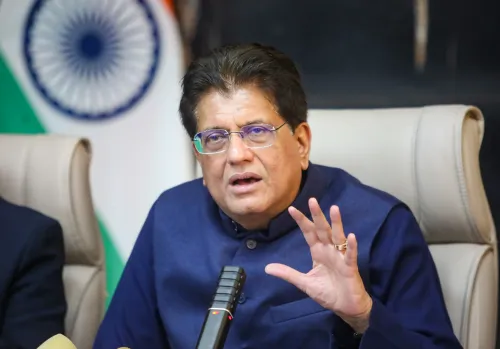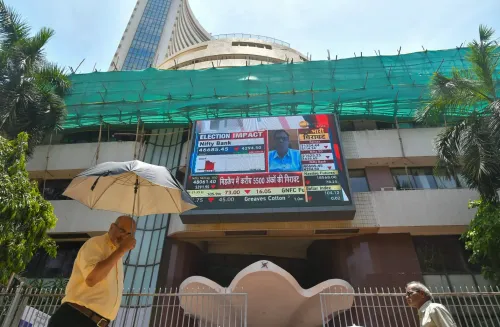Can India Maintain Its Export Growth in Hi-Tech Goods and Digital Services Amid Global Challenges?

Synopsis
Key Takeaways
- Merchandise exports in Q3 FY25 reached $108.7 billion.
- High-tech goods saw a strong growth rate of 10.6% CAGR.
- Services exports increased to $102.6 billion with a trade surplus of $52.3 billion.
- India ranks as the fifth-largest exporter globally.
- The US remains a crucial market for India's export strategy.
New Delhi, July 14 (NationPress) India’s trade performance during Q3 FY25 (October–December 2024) has shown a measured resilience in light of ongoing geopolitical challenges and changing global market demands, as per the latest quarterly report from NITI Aayog released on Monday.
Merchandise exports experienced a year-on-year increase of 3 percent, reaching a total of $108.7 billion.
The composition of exports remains robust; aircraft, spacecraft, and their components surged over 200 percent year-on-year, driven by heightened demand from countries like Saudi Arabia, UAE, and the Czech Republic, according to the report.
Since 2014, high-tech merchandise exports have been on the rise, particularly in the fields of electrical machinery and arms/ammunition, with a strong growth rate of 10.6 percent CAGR.
“The most recent edition of Trade Watch Quarterly for Q3 FY 2024-25 offers a timely and data-rich overview of India’s trade in merchandise and services, along with a thorough analysis of the changing US trade policies and their effects on India,” stated Dr. Arvind Virmani, Member of NITI Aayog, during the report release.
The services sector has also shown robust growth, with exports climbing by 17 percent year-on-year to $102.6 billion, while imports rose by 22.5 percent to $52.4 billion, leading to a services trade surplus of $52.3 billion, which partially mitigates the merchandise trade deficit.
Moreover, India has emerged as the world’s fifth-largest exporter, with exports of Digitally Delivered Services (DDS) more than doubling to $269 billion in 2024, driven by IT services, professional consulting, and R&D outsourcing, reinforcing India’s status as a global hub for digital trade.
North America and the European Union together accounted for about 40 percent of total exports.
Conversely, imports increased by 6.5 percent to $187.5 billion, thereby widening the merchandise trade deficit.
The thematic focus of the report revolves around the evolving trade policies of the United States, particularly the introduction of the current US tariff regime from April 2025 to July 10, 2025, and its impact on India’s export competitiveness.
The US has enacted a baseline 10 percent tariff on all imports, with elevated tariffs specifically targeting trading partners like China, Canada, Mexico, Vietnam, and Thailand.
While India’s average tariff exposure remains moderate, this policy shift presents a unique strategic opportunity for Indian exporters.
The analysis indicates that India is well-positioned to capture market share in a substantial portion of its exports to the US, which includes over 61 percent of trade value in the top 30 HS-2 product categories and 52 percent in the top 100 HS-4 categories.
These developments underscore the strategic significance of the US as India’s largest export destination and a critical growth corridor.
To leverage these advantages, India must adopt complementary policy measures that include targeted export strategies, deeper integration into global value chains, and a services-focused trade agreement with the US. Establishing institutional frameworks around digital trade, cross-border data flows, and mutual recognition agreements can further enhance India’s services footprint.
The evolving global trade landscape necessitates agile policymaking to adapt to new trade alignments, as highlighted in the report.










